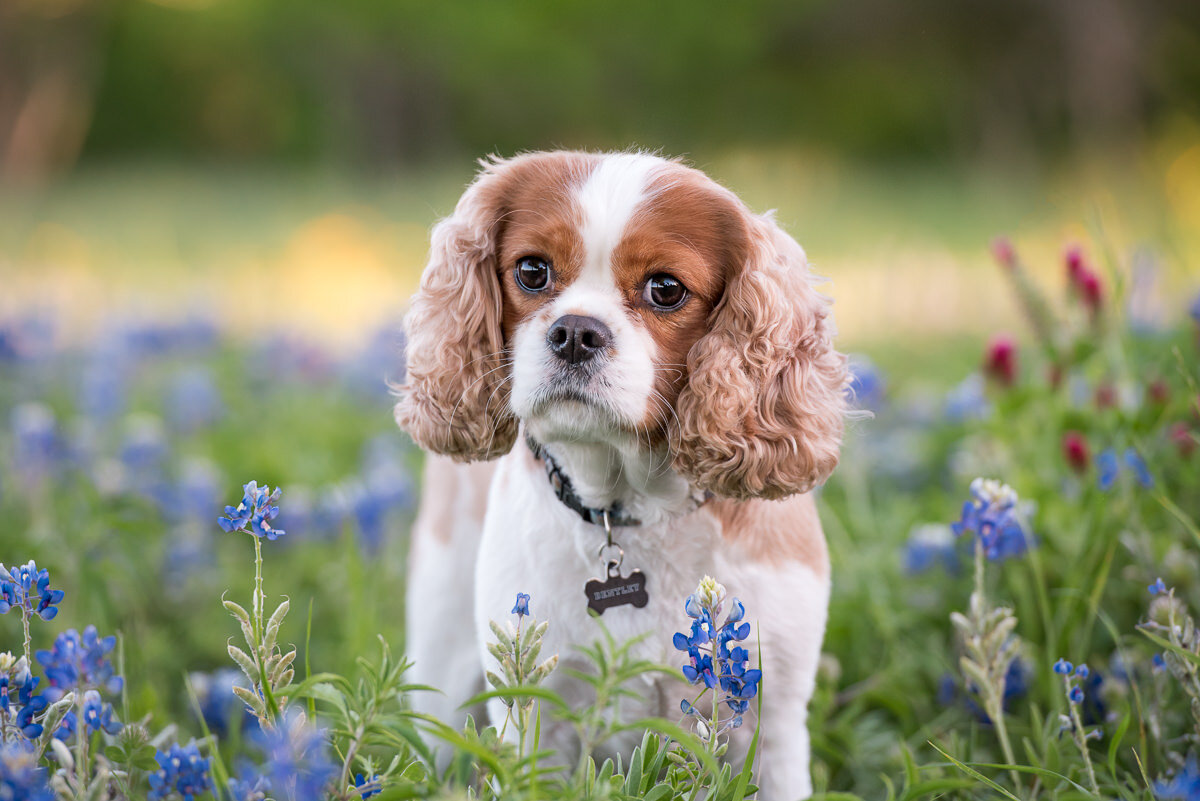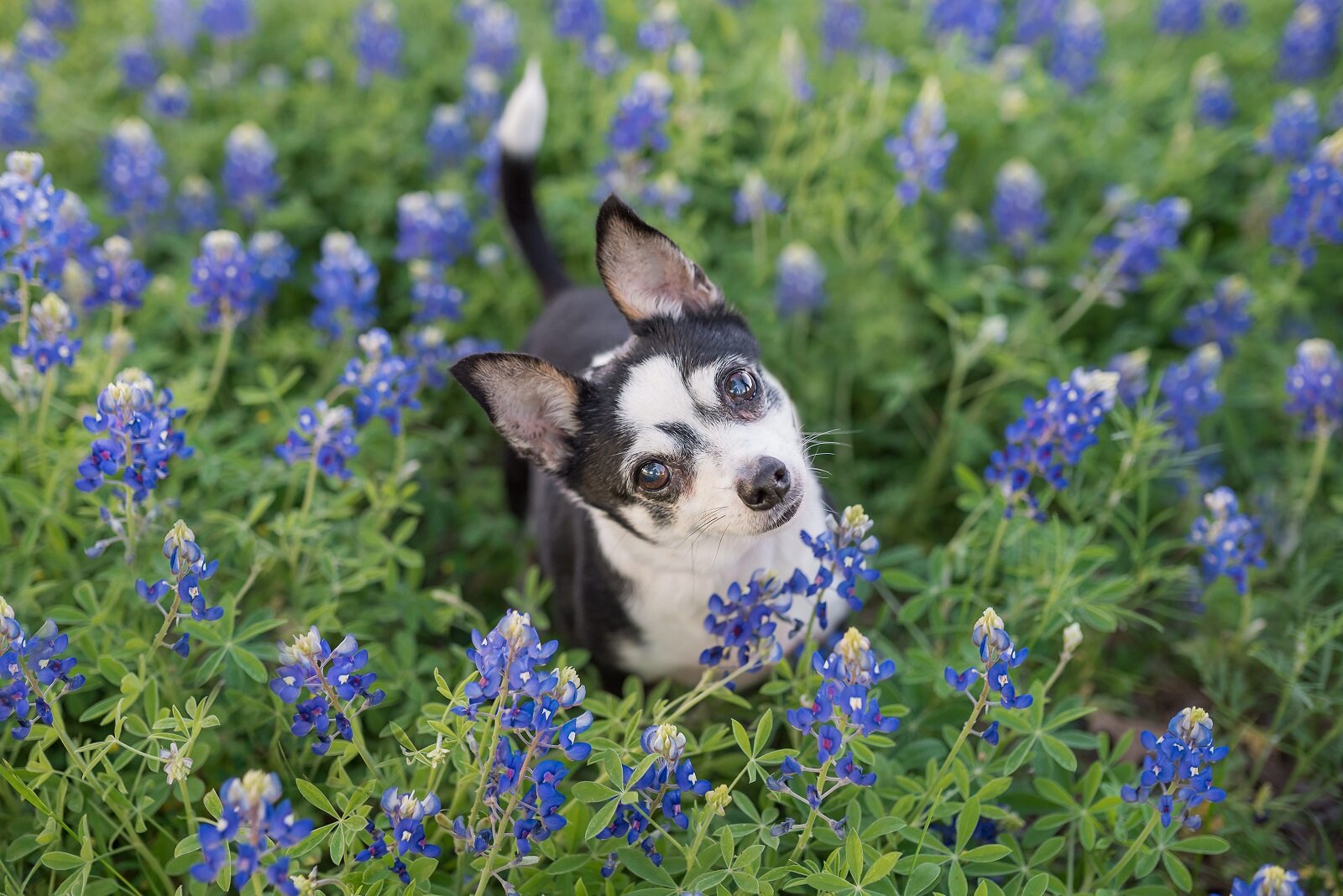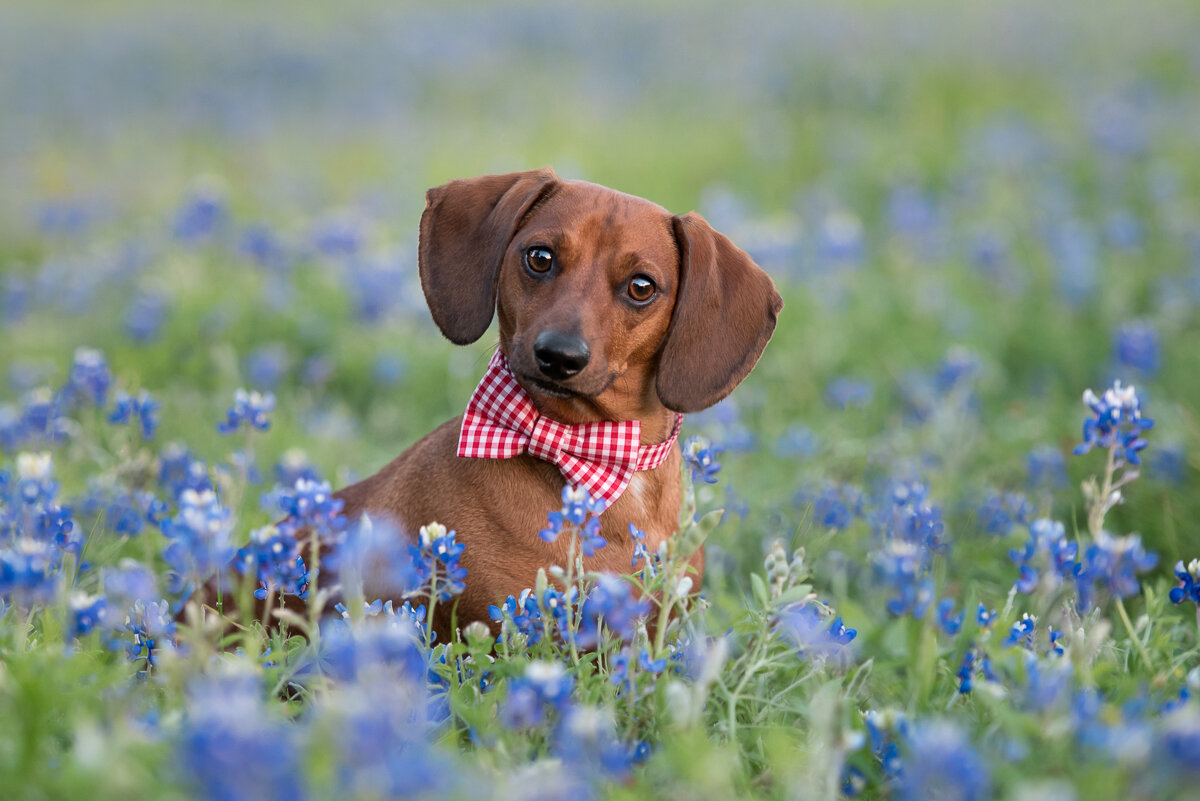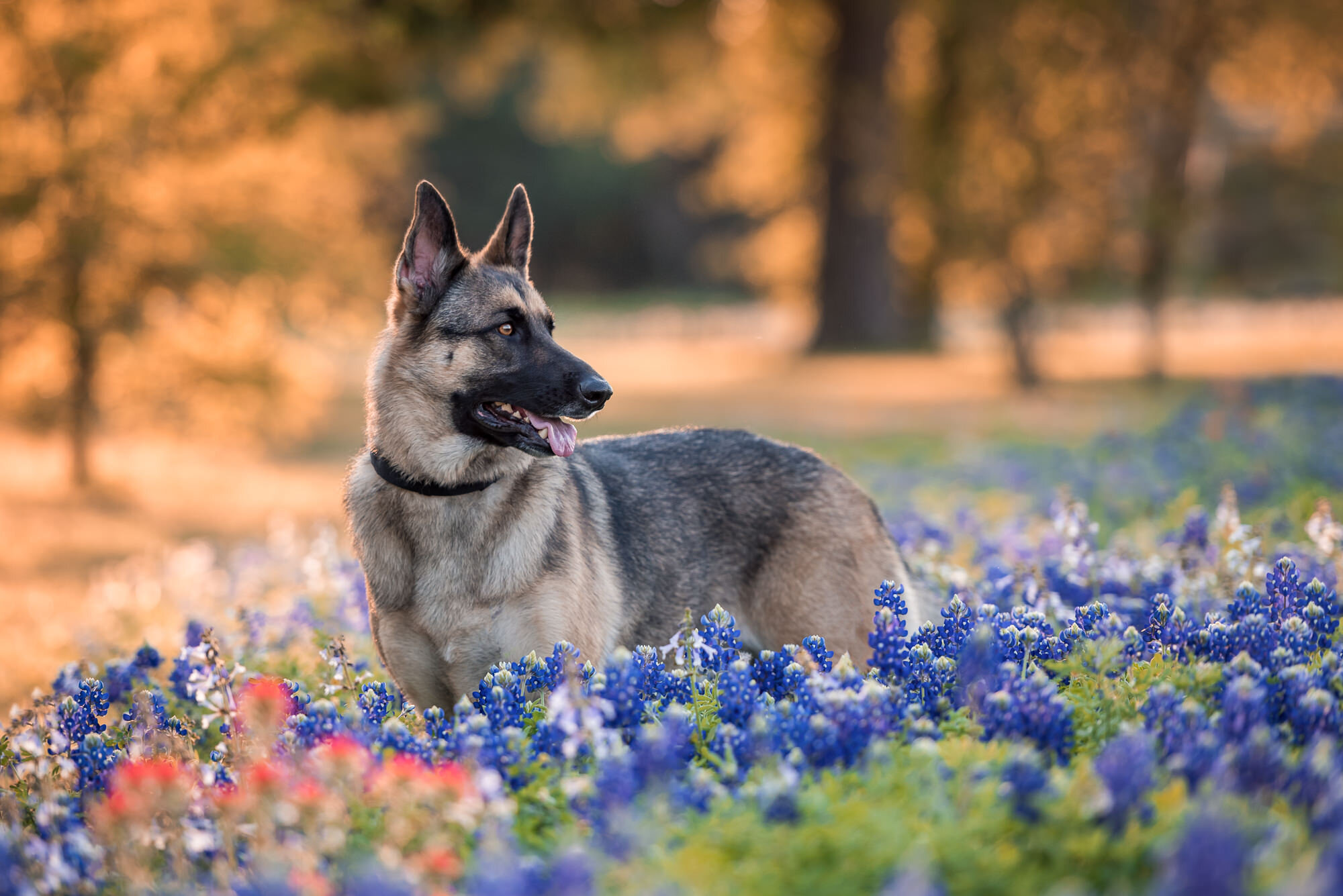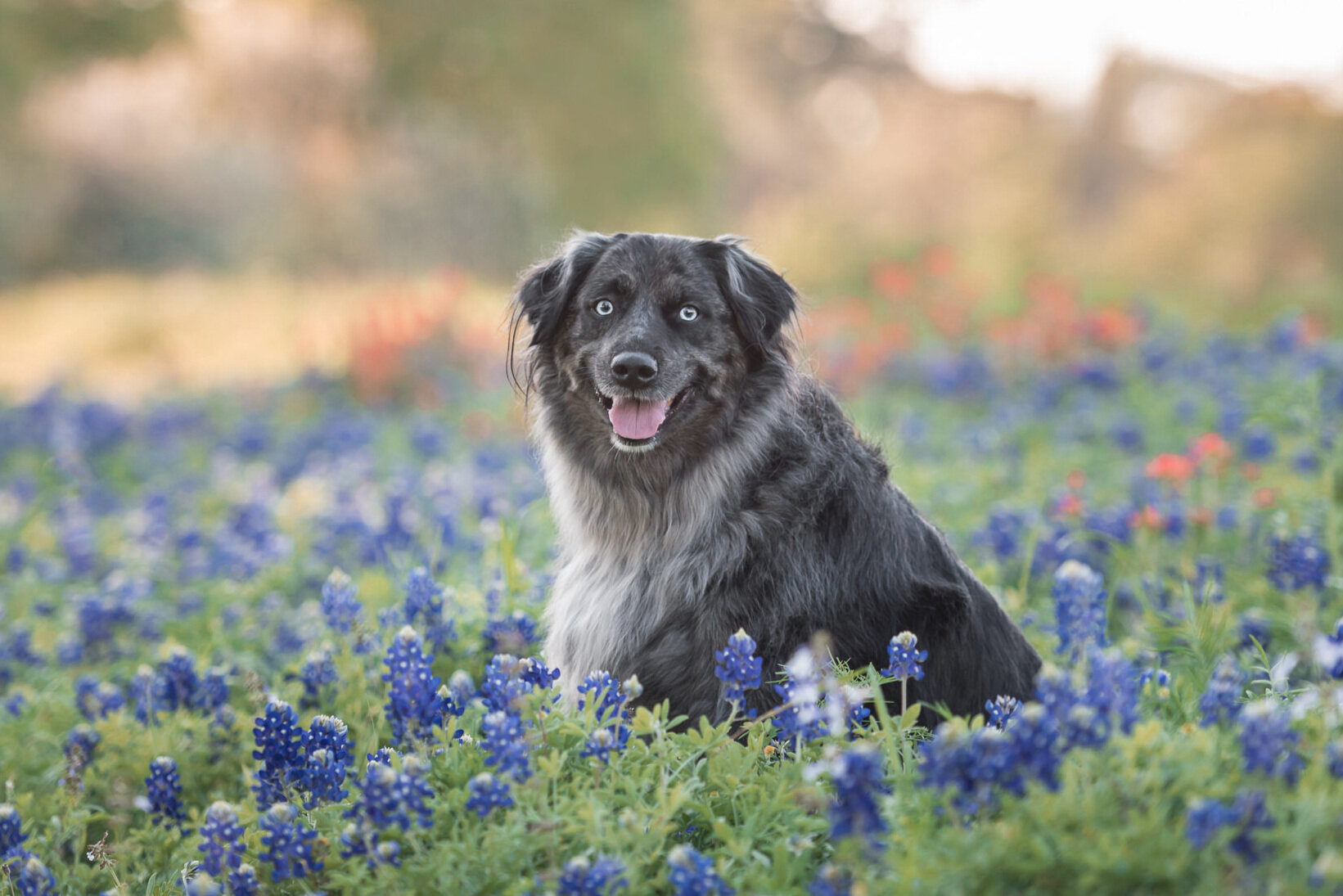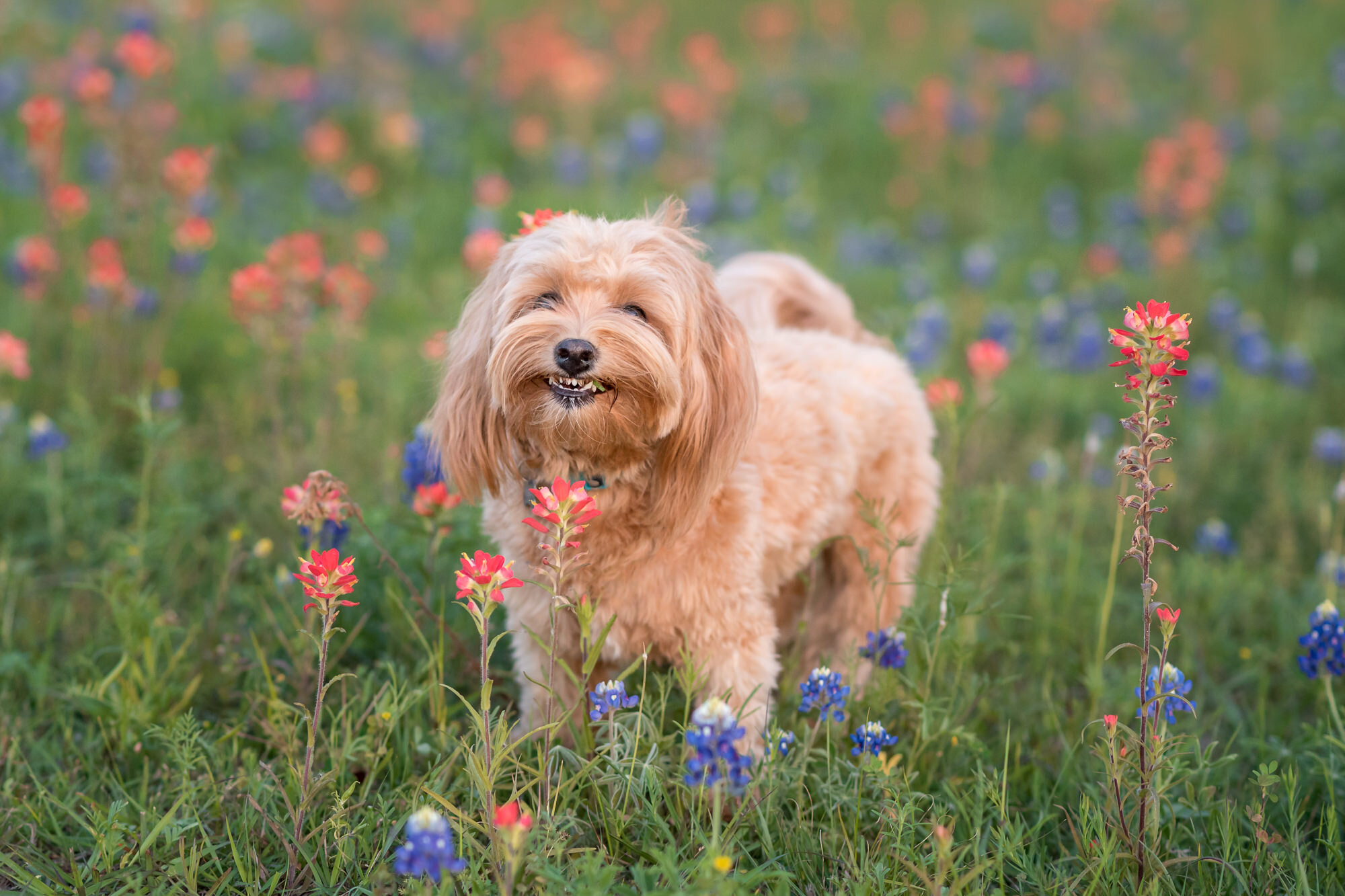Take frame-worthy bluebonnet pictures of your dogs and kids: tips from a pro
Take frame-worthy bluebonnet pictures of your dogs and kids: tips from a pro
It’s March, and in Texas that means… rodeo, cowboy boots, and bluebonnets!
If you’re new to the Lone Star State, or planning to visit during the spring, you’re in for a treat when Mother Nature puts on a spectacular wildflower show. And none as popular as the state flower of Texas, the bluebonnet. It’s basically a rite of passage for Texas kids and dogs to be photographed in the bluebonnets. I’m sharing my best tips for getting frame-worthy bluebonnet pictures, but first let’s review some basic safety and etiquette.
Safety
Many bluebonnet fields are visible from Texas highways, but please exercise caution viewing the wildflowers from such busy roads. It always makes me cringe when people park their cars on the shoulder and get out to snap pictures of their family only yards away from other cars whizzing by at 70+ mph - that’s just plain dangerous! If possible, find a side road or park so you can enjoy the flowers far away from highway traffic. In addition, be on the lookout for fire ants, snakes, and other creepy-crawlies that might be lurking in the fields.
Bluebonnet Etiquette
While there’s no law prohibiting bluebonnet-picking in Texas, it’s illegal to trespass on private property, and it’s also illegal to pick or destroy plant life on Texas State Parks property. It may be tempting to jump a fence for a closer look or better view, but just don’t do it! Treat the bluebonnet fields with respect and minimize any picking or trampling. When the flowers are damaged, it can prevent seeding for future years. And lastly, don’t mess with Texas! Look around and make sure you haven’t left any trash or belongings behind by mistake.
Tips for getting frame-worthy bluebonnet photos
Whether you’re photographing your dog, your kids, or your family, the following tips apply:
Timing is everything - for best results, try to visit the bluebonnet field just after sunrise or just before sunset. Midday sun is harsh and can create unflattering shadows and squinty faces. A cloudy day also works well since it creates nice soft even light.
Dress the part - choose simple clothing that will complement the bluebonnets, not compete with them. Solid neutral colors like blue, white, yellow, and even pale pink look nice in the fields of blue and green. For a Texan flair, add a cowboy hat, boots, or bandana. Avoid itchy legs with long pants and closed-toe shoes.
Keep it simple - when composing your shot, eliminate distractions from your frame, such as cars, other people, signs, electric lines, etc. The focus should be on your subject and the bluebonnets.
Get low - try getting low and photographing at your subject’s eye level. This makes for a more interesting perspective compared to shooting from a standing position looking down at your subject. And bonus: getting low can also help hide gaps in smaller bluebonnet patches.
Grab attention - if you’ve ever seen me photograph dogs, you know I have a ton of tricks to grab their attention. Whether you’re photographing families, toddlers, or dogs, get your pose and camera set up first, then get their attention right as you click the shutter.
Embrace color - while bluebonnets are in bloom, you might also see Indian paintbrushes, Indian blankets, buttercups, pink ladies, daisies, and more, which can add more color to your photographs.
Where do I find bluebonnets?
Brenham, Ennis, Burnet, and the surrounding towns are all popular bluebonnet destinations and host annual festivals during the spring. But you don’t always have to drive hours away to find a beautiful patch of flowers. In Houston, bluebonnet patches can usually be found along Buffalo Bayou, Brays Bayou, White Oak Bayou, Terry Hershey Park, Memorial Park, Blessington Farms, and Rob Fleming Park.
Love bluebonnets, but want to leave the picture-taking to a professional? Enter your email below to be notified when the next bluebonnet portraits open for booking.



